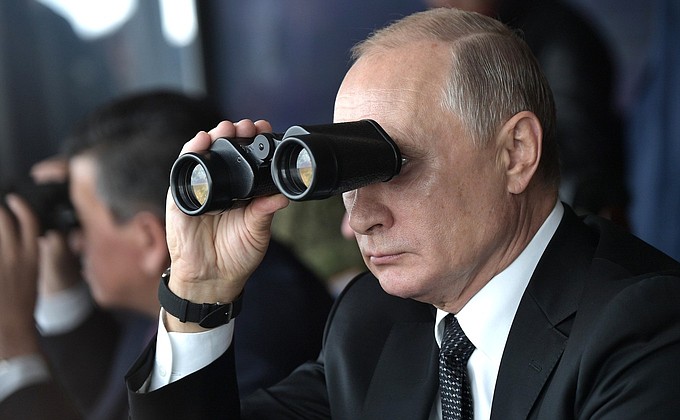 Photo courtesy of The Kremlin
Photo courtesy of The Kremlin
Anti-Western Security Partnerships: Russia’s “Tsentr 2019”
On September 16th, the Russian Ministry of Defense announced the kickoff of its annual military drills–this year, they have been dubbed “Tsentr 2019.” Although the occurrence of the military drills themselves isn’t surprising, the sheer size of this year’s operation, as well as its political implications, are reason for concern.
According to the Russian Ministry of Defense, the maneuvers will “involve in total over 128,000 servicemen, over 20,000 pieces of hardware, some 600 aircraft and up to 15 ships and vessels.” Additionally, they will occur on six combined arms training grounds including Totsky, Donguz, Adanak, Chebarkulsky, Yurginsky, Aleysky.” The multi-stage maneuvers, perhaps most importantly, will include forces from China, India, Pakistan, Kyrgyzstan, Kazakhstan, Tajikistan, and Uzbekistan in addition to Russian forces and hardware.
Though China joined Russia in 2018 for the same event, the addition of forces from these six other states, in addition to the volume of the exercise, implies a strong anti-Western sentiment and an ability to mobilize and cooperate.
Russian Defense Minister Sergei Shoigu has made clear that the maneuvers are not targeted at any specific country, and the official press release on the 16th says the main objective is to “verify the level of readiness of the military command and control units of the Central Military District,” but these military drills are far from simple practice. They are clearly an attempt at scaring the West using typical Russian tactics of military spectacle and diplomatic facade.
I commented on the growing level of cooperation between Russia and India in July, noting their financial calisthenics in allowing India to buy an S-400 missile system from Russia without potentially inviting sanctions from the United States. Their continuation of this cooperation in this week’s military exercises is only reason for more concern. As with most countries involved in these exercises, Russia’s relationship with India is fragile and skin-deep to say the least, but the fact that they are willing to cooperate in this capacity is a signal to the U.S. that it may be losing its influence on eastern countries outside China.
In China’s case, Ma Qixian, the commander of the participating Chinese PLA forces, was quoted saying “The drills will further enhance and deepen the comprehensive strategic partnership of coordination for a new era between China and Russia. It also has significant meaning on boosting our military’s capability to deal with all kinds of security threats together with other countries’ militaries.” This optimism is unsurprising: any display of power requires some degree of facade which hides underlying divisions (if the participation of both India and Pakistan didn’t make this clear enough).
Mathieu Boulegue, research fellow of the Russia and Eurasia Programme at Chatham House, said in a briefing ahead of the exercises that ““this is not a strategic alliance, there is nothing strategic about China-Russia relations right now … But what it’s showing is just a meaningful defense and security partnership.” China’s relationship with the U.S. is heating up right alongside Russia’s–issues like the Taiwan question and the South China Sea have driven China to seek out more intense cooperation with Russia, though this cooperation isn’t necessarily tied to concrete shared interests.
What China, Russia, India, Pakistan, and other participating countries do have in common though, is a desire to show the U.S. their ability to cooperate and create a strong coalition with vaguely anti-western ideals. As the U.S. tries to improve relationships with these countries one at a time, it should keep in mind their ability to band together, and their willingness to outwardly push their differences aside for the sake of power projection.





